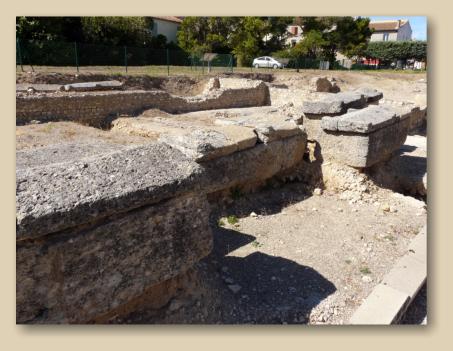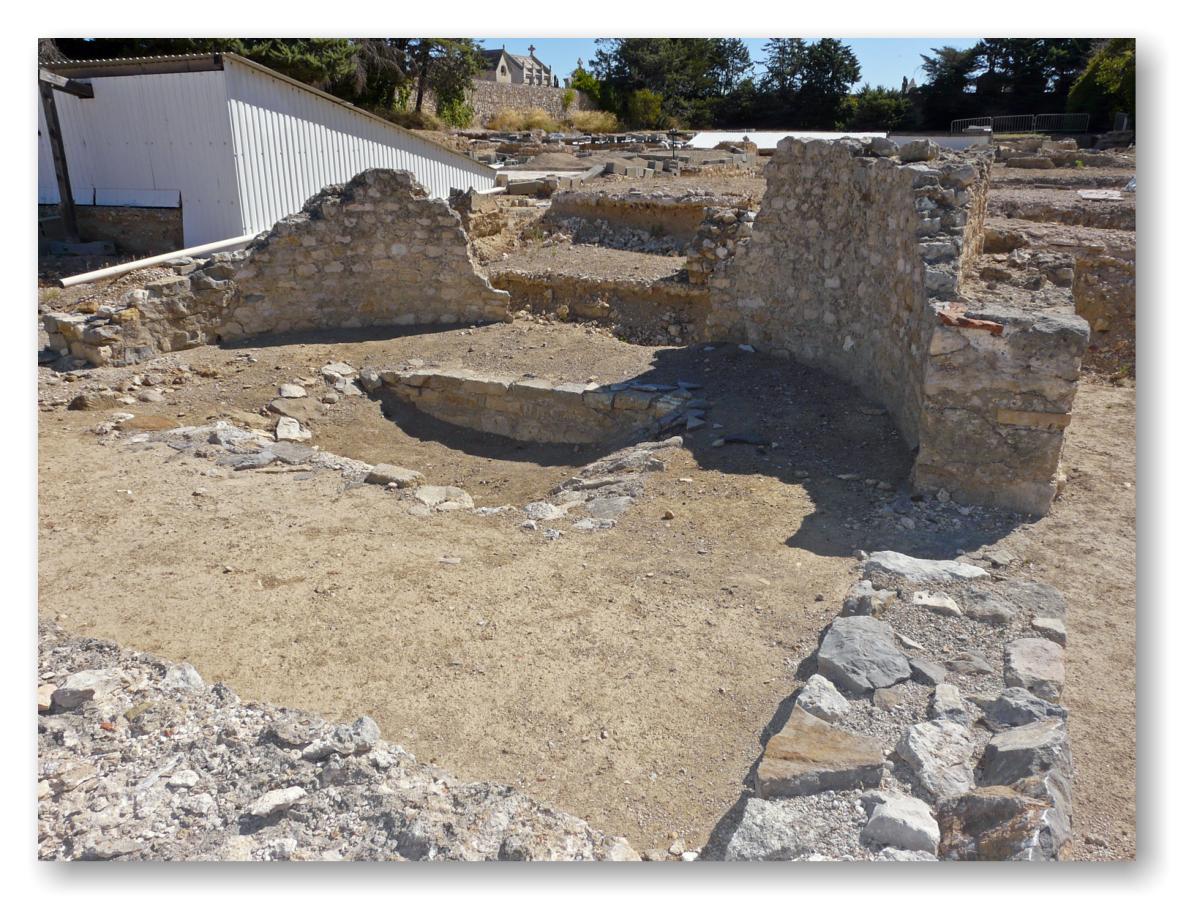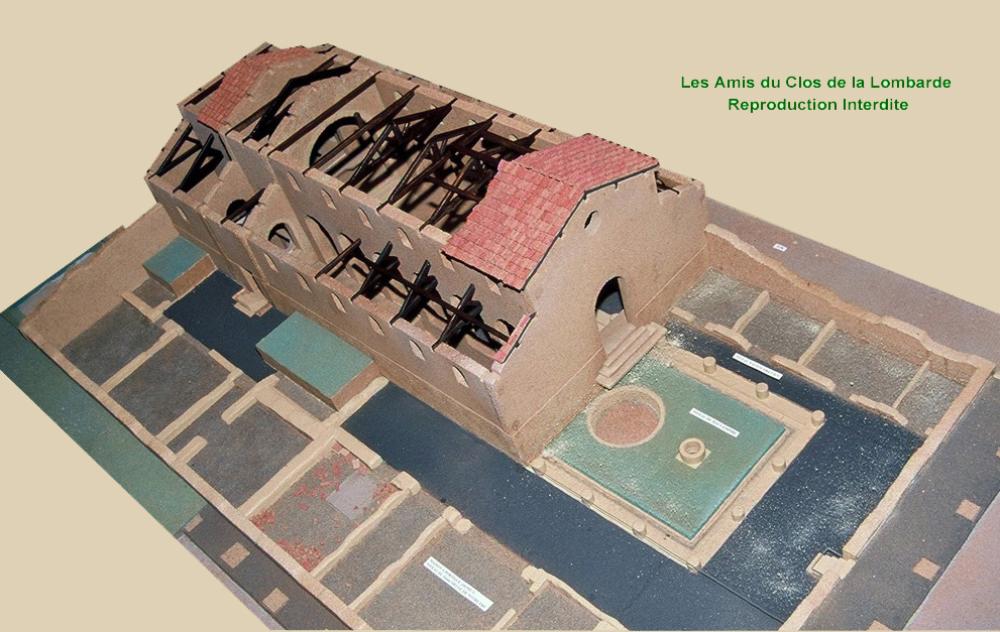






During
its
existence,
the
"Clos
de
la
Lombarde"
saw
the
establishment
of
various
artisanal
workshops
whose
remnants were found during the excavations.
THE FULLONICA
It was an establishment for preparing, treating or cleaning textiles.
Its remnants are at the northwestern end of street C.
It dates from the third century AD.
At this time the neighboring House with the Porticoes had already been abandoned.
Two basins, each measuring 3.50 m3, had been dug on the right hand side of street C. They were coated with a tile mortar and
had sealing beads.
The wastewater sewers there are very corroded, as the fullers
used very acidic liquids such as urine.
These sewers ran into the main collector of Street C.



In the south-east part of the city block, six basins, carefully paved with an opus spicatum made of bricks, coated with
waterproof mortar and with sealing beads, were found.
An important layer of oyster shells and pectens was discovered in the north-east of the city.
These elements suggest that this establishment could have been a garum factory identical to that found on the
archaeological site of Ampurias in Catalonia.
This establishment ceased to function at the end of the 1st century AD.




ARTISANAL ESTABLISHMENT FOR THE PRODUCTION OF GARUM









